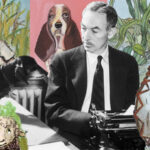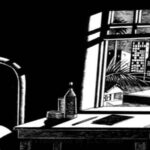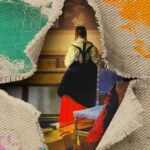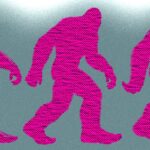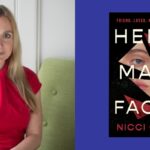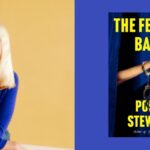Fifteen Dogs is the second novel of André Alexis’s Quincunx, a series of five books, each in a different genre: a pastoral, an apologue, a ghost story, a quest, and a romance. Alongside influences like Tolstoy’s novella Kholstomer and the work of the literary critic Viktor Shklovsky, Fifteen Dogs was, according to Alexis, influenced by his encounters with a number of creatures who “still haunt [his] imagination.” Here, then, is their story:
I. Eleven dogs, Sharbot Lake, Ontario
In 1996, a friend of mine could not, for a time, take care of the eleven huskies he kept for his dog-sledding business. Needing a solitary place in which to write my first novel and happy to help out, I volunteered to take care of the dogs. That’s how I found myself alone in a lodge, in the woods, ten kilometers outside of Sharbot Lake and two kilometers from the nearest human.
My duties were simple. Twice a day, I fed and gave water to the dogs in the run. Once a day, I cleaned up after them, shovelling their shit away from the eleven empty barrels in which each slept or escaped from bad weather. The dogs spent most days outside, their leashes clipped to guide wires that allowed them a certain mobility.
I was grateful for their company and for the routine my duties imposed on me. No matter how I felt, no matter how well or how poorly my work was going, I had to attend to them. And, naturally, I came to know each of them, their quirks: from skittishness at my presence to barely restrained joy at the sight of me. It’s been almost twenty years since I took care of the dogs. I feel great sadness at the thought that all of my charges are now dead and that I remember only a handful of their names: Trapper, Annie, Dennis, Dagger, Lightning.
My most vivid memory of that time came one night when I’d been without human company for some months. Being far from town and on the edge of wilderness, there were no streetlights. My room in the lodge looked onto the woods where the dog run was. Until sunset, I could see the dogs moving about or settling to sleep. But every night, before they settled down entirely, the eleven would howl. One would start and then another would take up the call until all eleven were howling together. It was a kind of “canine gestalt,” as my friend called it, a way of saying “We are here, all of us.” And it was, once you were used to it, comforting. In fact, from time to time, you could hear other dogs —or perhaps wolves—joining in from distant farms or other places, ghostly.
At some point, it occurred to me that I didn’t know if the same dog began the howling every night. The howling seemed to be a ritual, so I naturally wondered about the extent to which it was ritualized. I then began to wonder if I could begin the ritual? I began to practice, joining in with the pack to see if any of them noticed. I don’t know if any did, but none seemed to. The dogs went on howling as they always did, stopping as they always did, after a brief time.
And so, on a typical evening, somewhere around the time the pack usually settled in, I began to howl from my bedroom window. There was a pause, as if the pack were considering some new idea.
–Was that what I think it was?
or
–Well, that’s unexpected.
Then, they took up the call, all of them howling along with me.
I have no way of knowing what the dogs were thinking, of course. It was time to howl, so it may be that my own cry was simply well-timed. Still, I can think of very few moments in this life when I’ve felt such a sense of belonging.
None of the dogs treated me any differently, thereafter. Those who’d been skittish around me, like Annie, remained skittish. Those who’d accepted me at once, like Dennis, accepted me still. But I like to think that my sense of gratitude made an impression on them. In any case, what I took to be their acceptance left a deep impression on me. And when I came to write about the pack formed by the dogs in my novel, about the significance of pack it was with this slightly mystical feeling of acceptance in mind.
II. Two dogs and a chicken, Buccoo, Tobago
I was in Tobago, writing. But this was a day on which I’d finished early. I’d done what I thought was sufficient work. Then, I sat out on the porch drinking Carib.
I was living on Post Office Street. There was no post office. At one end of the street, there was a bar that served good food: split pea soup, iguana and dumpling, dumplings, crab and callaloo. At the other end, there was a house by a cliff overlooking the ocean. The house was owned by a kindly old woman, a woman in her seventies with Alzheimer’s who sometimes forgot to put on clothes before wandering around.
All along the street, there were dogs, a dozen or so. They had masters, but some seemed feral, roaming in the evening and growling as you passed. I remember one in particular: its front leg had been broken and stood at a right angle to its chest. It ran three-legged, looking as if it were trying to pat something invisible that ran before it.
In the yards—interconnected because there were no fences—clusters of chickens walked about.
–Whose are they? I once asked.
–Anyone’s who can catch them…
…was the answer. And, in fact, chickens do seem to sense when one’s pursuing them with intent. They can be difficult to catch. Otherwise, during the day, they walk about unhurried and, at night, they sleep in the prickly branches of the limes trees, seemingly unaffected by the thorns.
On the day I’m speaking of, when I finished work early, I was sitting alone, looking at a chicken as it pecked at the ground in our yard. Gradually, I became aware that I wasn’t alone in watching the chicken. Just beneath me, perhaps unaware of my presence above them on the porch, two dogs stared at the chicken. I would have sworn that the dogs—both mutts, both belonging to the next door neighbor—were in some sort of confabulation. Then, one of the dogs went off on its own, going into the tall grasses of the garden behind our house.
After a time, with the russet-feathered hen still mindlessly walking about, the dog who’d stayed by my porch sprang up and ran for her. The hen saw him coming and fled. But the dog did not run directly at the hen. Instead. He corralled her towards the other dog, the one who’d gone off to the garden. Seeing this second dog, the hen veered off, her cry louder than what you’d imagine. She was done for and knew it. In an instant, the first dog had her by the neck. Her death was like a spasm of feathers in its jaws.
Now, the first thing I ever saw killed was a chicken, its neck wrung by Ada Homer, my great-grandmother. Since then, I’ve seen any number of them done in. So, the death of the hen is not what moved me. It was the dogs and what I took to be their machinations. Once the hen had been killed, the two slunk off together with its body, heading back through the tall grasses to their own house, as if they’d done something it was proper to hide.
These are my impressions, of course. What I actually saw was simply two beings who’d collaborated to kill a third. But in that collaboration—or in my interpretation of it—I thought I recognized something essentially human, some thinking I could have pointed to as “human.” It seems to me, these days, that I’ve ransacked the history of philosophy in an effort to pin this human element down.
III. A rat, Buccoo, Tobago
In the end, I never did see the rat. The first inkling I had of its existence was, one morning, when a vanilla cake I’d bought from the corner shop had teeth marks in it, along one edge: a scalloped indentation, as if a child had nibbled it through the waxed paper. In fact, my first thought was that one of the people visiting the house had been hungry but had not wanted to consume something that didn’t belong to them. This was, of course, a ridiculous thought. But it persisted until Kenwyn, my roommate, casually suggested that we might have a visitor; that is, “a rodent.”
Most of the houses in Buccoo are what you could call “ventilated.” They’re made of concrete walls and floors. Just beneath the roof, the uppermost layer of wall is often brick in which perforations have been carved to allow the wind to blow through, cooling the house for those who can’t afford or don’t want air conditioning. In our house, there were also two or three inches of space beneath a door. So, birds and bats came in at the top. Lizards, millipedes, and rats had access beneath the doors.
Given all this, I should have been on the lookout for rodents. That I wasn’t is, in part, because I have never had to deal with rats in my home. (Mice yes. Rats no.) It was also, in part, because the Tobagonians were careful not to mention rats in my presence. They were convinced that a “well-to-do” writer would panic at the thought of a rat in the house, a thing they were used to. This wasn’t entirely false. I wasn’t “well-to-do” but, still, I would not have slept as soundly knowing there was a rat (or rats) running around.
And, so, I was not thinking “rat” when my underwear began to disappear.
In Tobago I slept beneath a bed sheet, because I can’t sleep unless I’m under a sheet of some sort, however warm the night. But to sleep under a sheet in that weather, I had to be naked. Every night, I’d fold my clothes and leave them at the end of the bed or I’d put them atop the full-sized mattress that leaned against a wall in the room. The first time my underwear went missing, I blamed myself for misplacing my briefs and then, after a half-hearted search, I got on with the day. The second time, I made a concerted effort to find them and it was with a kind of relief that I found both pairs on the floor behind the leaning mattress. All suddenly made sense. I had been careless. My underwear had slipped behind the mattress on its own. I resolved to leave my briefs at the bottom of the bed rather than atop the mattress.
Some time between the third and fourth occasion on which my underwear went missing, I had a peculiar dream. It wasn’t unusual in its symbolism or content. The dream, which I barely remember, was the usual collision of symbols set in a version of the world whose necessity was determined by that night’s psychological needs. Suddenly, in the midst of my dream, what I can only describe as some being or some where made its presence felt. That is, within the dream itself, it was as if a cloud or exhalation entered, lasted briefly and was gone. If I had to describe this “exhalation,” I’d say it was something like an emanation of wilderness: swamp without the swamp, decay or fecundity without a recognizable source. And when it was gone, my dream took up from where it had been, without incorporating the intrusion. As if my psyche acknowledged the presence but knew it to be surplus to its needs.
It’s clear that when we sleep we are not insensate. Our bodies remain in the real world, whatever worlds our psyches traverse. Some part of us interacts with our surroundings even while we sleep. I am almost certain, in retrospect, that my psyche knew the rat was on the bed with me. Perhaps the creature was reconnoitering, checking to see if it could take anything useful from the gross mammal beneath the bed sheet. Whatever the case, from that dream moment, I understood that, at night, there was another being in the room with me. So that when, a few days later, I woke to find that my dentures—which I’d drunkenly left on the desk in my room—were missing, I immediately looked behind the mattress. And, of course, there they were, along with a pair of my underwear, some plastic wrapping, and pieces of paper that the rat had gathered for its nest.
I considered going without my dentures for the rest of my time in Tobago. But reason more or less won out. I boiled them. And then, because I was too disgusted to put them back in my mouth, I boiled them twice more. I then told my hosts what had happened. They put out poison which, over the following days, I could see was being consumed. The rat eventually died beneath the washing machine, its remains cleared out before I got a look at it.
My encounter with the rat makes a good argument for dental implants, but the thing that stays with me most is the interruption of my dream, the brief presence of a “foreign” being or place. The reason the interruption remains vivid for me is, I think, that, at its heart, my encounter with the rat is paradoxical. I mean, in so far as fecundity and decay are part of me, so was the rat—or what I presume to have been the rat. In my dream, I knew the rat’s presence was mephitic, I recognized it. If it had been truly “foreign” or “alien,” if the presence had been Martian, say, I could not have known it or recognized it, could not have dismissed it; that is, if my psyche had registered its alien-being at all. The rat and I were from the same world. And so, in my dream, the foreign was domestic, my fellow creature’s mundanity was as fleeting and strange as its exoticism.
This paradox—that wilderness and the domestic share something, that some part of me is, for lack of a better word, “swamp”—was a thing I constantly felt as I wrote Fifteen Dogs.
IV. Tolstoy’s horse and Ozu’s dogs
“Kholstomer,” a story whose title is sometimes translated as “Strider,” was written by Leo Tolstoy in the mid to late 1800s. It’s the story of a horse’s life and death, written more or less from the horse’s perspective. I first read it in my twenties when, galvanized by War and Peace, I read as much of Tolstoy’s work as I could find.
“Kholstomer” is wonderfully written, but I’ve never found it entirely satisfying. It’s one of those stories in which Tolstoy is conspicuously making a point about human cruelty and injustice. That he uses the horse, Kholstomer, to make his point is what feels slightly off. To my mind, it’s as if Tolstoy were using Kholstomer much as its cruel owner does: without regard for its integrity and independence. The story’s perspective is not sufficiently horse-like so that, while reading it, I sometimes find myself wondering why Kholstomer would bother to consider the implications of this or that bit of human behavior, why he is interested in subtleties of human language.
I have no doubt that “Kholstomer” influenced Fifteen Dogs. It may even be the hidden root of the novel. But I haven’t read it for decades. These days, I think about “Kholstomer,” first and foremost, as a work that influenced the critic Viktor Shklovsky. I see the story through his eyes. Shklovsky’s work has been crucial to me in a way critical writing almost never is and his best-known essay, “Art as Device,” (or “Art as Technique”) was a kind of guidebook to me as I wrote Fifteen Dogs.
“Art as Device” is so well-known and so influential it feels superfluous to give an account of it but, briefly: it is the first essay in Shklovsky’s Theory of Prose. It’s here that Shklovsky, sometimes called a Russian Formalist, most cogently lays out his idea that Art works by defamiliarizing the familiar. As he writes: “After being perceived several times, objects acquire the status of ‘recognition.’ An object appears before us. We know it’s there but we do not see it, and, for that reason, we can say nothing about it. The removal of this object from the sphere of automatized perception is accomplished in art by a variety of means.”
Shklovsky then shows us the ways by which Tolstoy removes things from the sphere of the familiar, making them strange again, allowing us to see or imagine them anew:
- Tolstoy does not call a thing by its name, describing it, rather, as if it were being perceived for the first time
- incidents (even banal incidents) are described as if happening for the first time
- Tolstoy doesn’t use the names of parts of things, using instead names that correspond to parts of other things.
- Tolstoy employs unexpected points of view, so that things are made strange by his character.
In “Kholstomer,” most of Tolstoy’s devices are used.
While writing Fifteen Dogs, whenever I had to describe a thing, I thought first of how I might describe it from a dog’s point of view, with a dog’s sensual awareness in mind. That is, I worked as Shklovsky’s Tolstoy had in “Kholstomer” but with this difference: the human-ness of my dogs was part of the novel’s plot and its point.
There was one unexpected consequence of working this way. There is a passage in Fifteen Dogs when a poodle named Majnoun watches Yasujiro Ozu’s film Tokyo Story. Faithful to Tolstoy’s method, I decided to describe the film in terms of its dogs. I assumed, before I wrote the passage, that Tokyo Story didn’t deal with dogs at all, that I would be writing about an absence. I’d seen the movie a dozen times. I couldn’t remember there being any dogs in it. But I was wrong. There are two instances in which dogs figure in Tokyo Story. First, towards the middle of the film, one hears a whistle and then four dogs run across the screen. This takes no more than two or three seconds. Blink and you miss it. The second “dog moment” occurs towards the end when one of the characters whistles for his dogs. Here, we see only the whistler not the dogs.
Whether by design or coincidence, Yasujiro Ozu, the film’s director, had left an elegant equation (“dogs but no master” against “master but no dogs”) that you would only catch if you were concertedly looking for dogs in the film. As Tokyo Story is almost two and a half hours long and as dogs figure in it for no more than four or five seconds, this is a strange and unexpectedly Tolstoyan moment at the heart of the film, a moment in which the ordinary is made mysterious.
It is a moment that Majnoun notices and struggles to understand.
V. In memoriam, Layla Siena
It’s difficult to pinpoint the origins of a novel. I can’t speak about other art forms but novels are—at least, for me—created in a fog of influences. I could, for instance, write an even longer essay on how Homer, Sophocles, Kant and Jakob von Uexküll are at the heart of Fifteen Dogs. While writing a novel, one steals from everywhere, indiscriminately, without necessarily being aware of what one is taking or from whom. So much of novel-writing is letting things through—shutting off your critical faculties—that critics and interested parties often spot relevant influences that the writer himself or herself is unaware of.
In any talk about origins, one has to be careful. But there’s an undoubted influence on Fifteen Dogs that I’d like to point out, here, at the end of this essay. Though I rarely draw from real life, one of the dogs in the novel, Majnoun, was based on a standard poodle named Layla Siena. Layla is a dog I observed up close for years: from the time she was a puppy to the age of seven. While writing Majnoun, I thought constantly of Layla’s bearing, her unsavoury habits, her skittishness, her behaviour around other dogs.
As Layla has died, I’ve come to think of Fifteen Dogs as a graveyard or headstone. It’s possible that all novels are, in this sense, graveyards or headstones. They entomb their seeds or at least mark the place where they are buried. Which is to say that, with novels, origins and endings meet.



